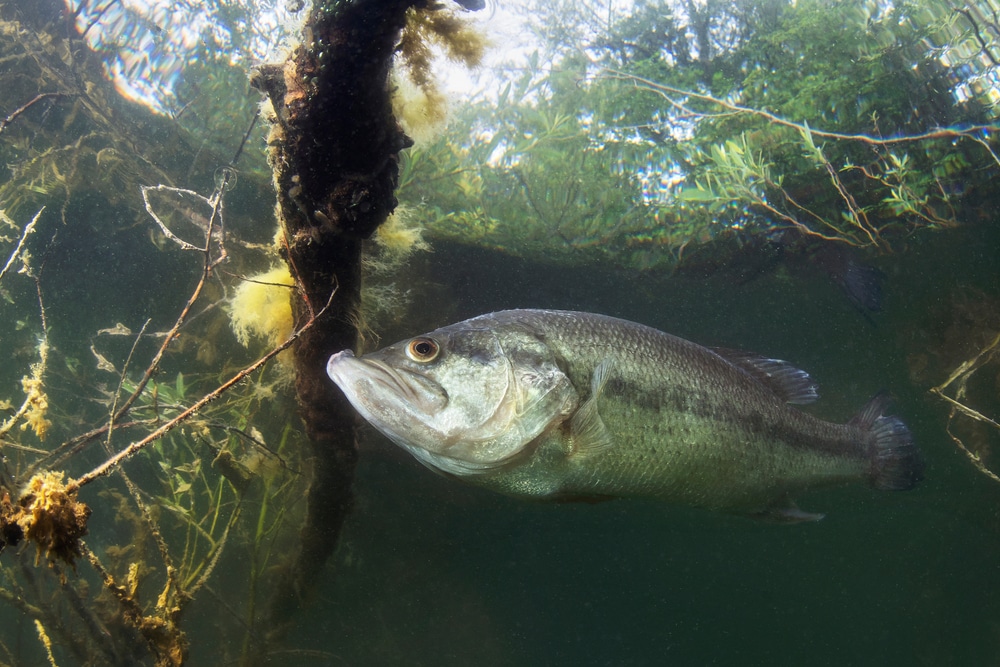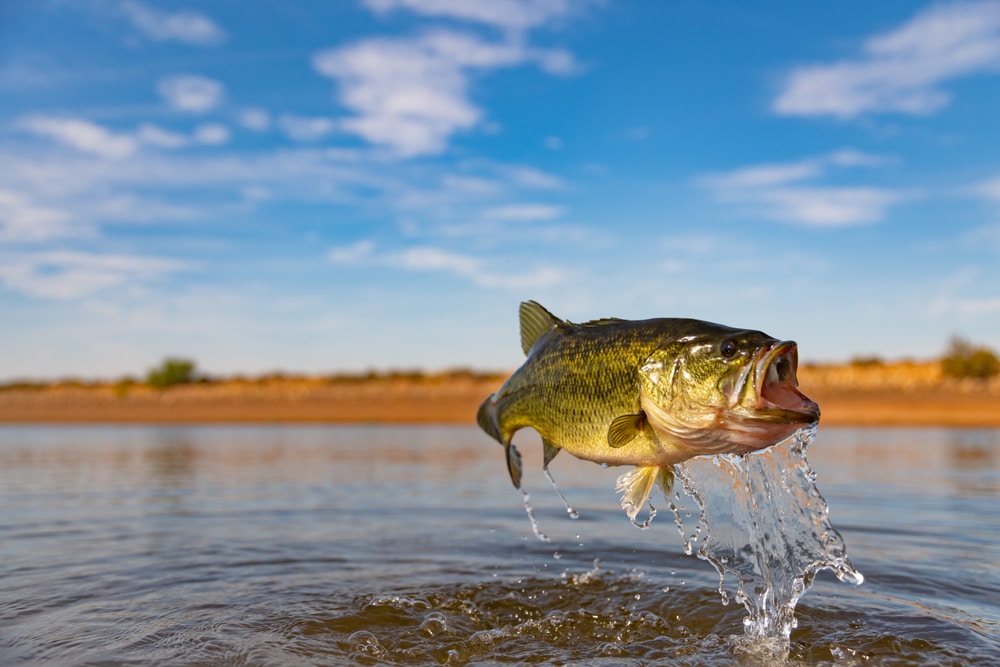Bass fishing is a growing sport and while catching fish is a blast, you sometimes fish in catch-and-release waters were returning fish back to the water means you return them back in good health.
When fishing for bass in deep waters, you may experience fish that have barotrauma, which is a condition caused by bringing the fish up to the surface too quickly.
Here is more information on barotrauma and what you can do to improve the health of the fish.

Contents
What Is Fizzing a Bass?
Barotrauma occurs when you bring a bass or other fish species up to the surface from more than 50-foot depths.
The signs and symptoms make the fish look bloat.
Sometimes the stomach is distended. Sometimes the fish’s eyes are bulging.
Sometimes, you can see part of the stomach sticking out of their mouth or the bowls or intestines pushing out the rectum.
As the fish comes to the surface, there is an expansion of gasses inside the swim bladders.
Fish have swim bladders to help them ascend or descend in the water.
When those bladders are impeded by too much gas, it is like an airbag went off inside them and has not deflated.
Fizzing a bass is simply deflating that airbag and removing the gas from the air bladders.

When Should You Fizz a Bass?
If the fish cannot swim properly due to the expansion of gas in its air bladders, then it must be fizzed. The fish will die otherwise.
Fish that have barotrauma may float upside down or on their sides.
Because air floats in water, the fish will be unable to swim or dive beneath the surface.
A fish that suffers from barotrauma has next to no chance of surviving without fizzing.
How Do You Fizz a Largemouth Bass
The best way to fizz a largemouth bass is to insert a hollow needle into the side of the fish at a specific location.
The needle must be hollow so that the air will escape from the bladder.
Some older methods suggest fizzing by inserting the needle through the mouth and down into the abdominal region.
New evidence suggests that mouth fizzing is too dangerous for the fish and that side fizzing should be the standard for fizzing a largemouth bass.
For side fizzing, look for the notch between the dorsal fins.
A line that notch up with the anal opening. Imagine another line that runs from the tail to the top of the pectoral fin.
Where these two lines cross is the place where you would insert the needle to puncture the swim bladder.
The location is two or three scales below the lateral line on the fish.
If done correctly, the expanded gas will fizz out of the side of the bass.
You should carry a hollow needle with you in your tackle box.
These needles should be available at your bait and tackle store or online.
The key is to slide the needle under the scale at an angle and through the flesh to the swim bladder.
You will hear the air release when you puncture the bladder. Not damaging the scale where the need is inserted, means that the scale will help to protect the wound from infection.
It is a good idea to study fish anatomy before you go fishing.
While barotrauma generally occurs in waters more than 50-feet deep, it can occur in shallower waters from 20-50 feet depths.
How Do You Fizz a Bass without A Needle?
To fizz a bass without a needle requires that you weigh the fish down so that they can return to the deeper water where the pressure of the water will naturally cause the swim bladder to deflate.
The process requires that you put the weight down the fish’s throat and hook it in such a way as to prevent the fish from swallowing the entire weight.
Once the fish is weighted down and sinks you can release the fish after a few minutes.
A better way to avoid having to fizz a bass is to bring them up slowly so that their swim bladder has the chance to self-regulate as the bass nears the surface.
There is no real need to rush the process.
Conclusion
Barotrauma is 100 percent avoidable. Fizzing a fish poses a slight risk to the fish so if you can avoid issues with the swim bladder expanding it is better for the fish.
A fish that is released with barotrauma will die unless fizzed.
To keep bass populations high and full of quality fish, you will need to take your time reeling in those fish you catch below the 20-foot depths of water.
In terms of Fizzing – once you learn how to fizz a bass, the process becomes easier and faster.
A good tip is to keep a few fizzing needles in your tackle box and like other gear, make sure they are clean and that the needles are free of debris.







